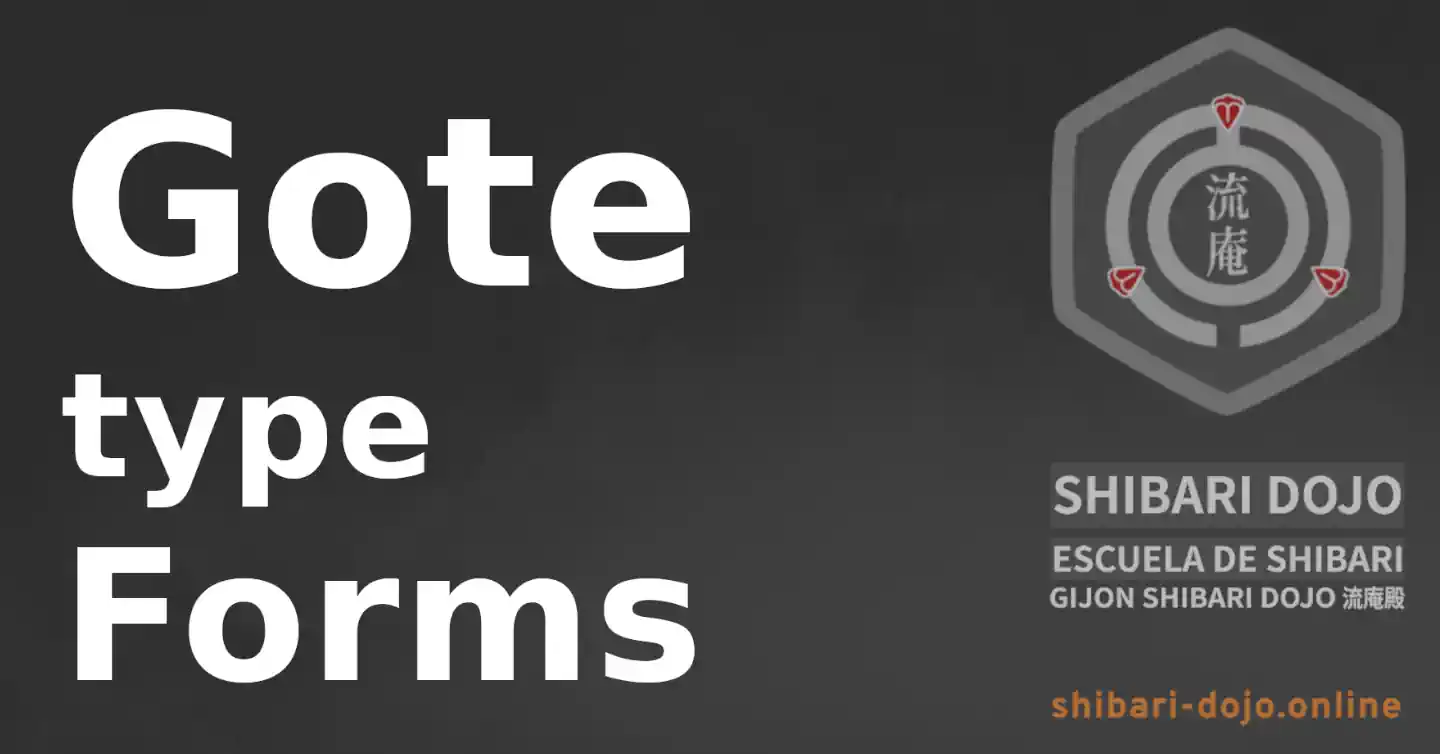Gote is the generic name for one of the most popular and recognizable forms in shibari. Virtually every style, school, and era has its own versions.
Sometimes identified as gote, other times as takate kote or kote, these generic names encompass various types of torso harnesses that serve similar functions.
Our glossary includes an entry with the meaning of each of these terms.
As one of the most popular forms, we find countless variations and evolutions.
Obviously, each variation should have a technical reason for existing, beyond mere aesthetics. However, this isn't always the case, and many modifications are simply added to differentiate from the original without adding any functionality.
To keep things simple and move away from purism, let's define some characteristics and create a categorization that will serve as a foundation for studying these forms.

Gote
Under this umbrella, we group the simplest variants, those that restrain the arms behind the body, connecting them with rope and featuring a single rope line passing across the front of the torso, typically across its upper part.
These create an efficient restraint and, when well-constructed, serve as a good tool for managing the body of the tied person.
Due to their simplicity and the way they position the body, they create scenes of great beauty, not lacking intensity in their apparent serenity.
Takate
Also known as TK (please, Spanish speakers, don't say "tikei," it makes no sense), this is a more complex form. With two lines: one "above chest" and another "below chest", it's generally used as a foundation for suspensions.
It's a problematic form, as poor execution and lack of understanding have caused countless injuries.
However, when properly constructed, with an understanding of how it works and in which circumstances and uses it should be applied, these forms are highly functional.
Kote
At least in Spanish, due to their similar sound, gote and kote are often used interchangeably, but technically they are different forms.
The basic characteristic of kote is that it uses the forearms as support points for the ropes.
Although, as we'll see later, this should be a common feature across all forms.
Other Variants
There are a few more variations of these forms, but due to their limited relevance for erotic shibari practice, we won't address them.
Different Structures
From a rope technique perspective, gote forms fall into two major groups or variants: one that uses counter-tension to close the line or lines that wrap around the body (for example, those associated with the Naka style), and another that employs locks or "knots" on a central "stem" for this purpose, associated with styles derived from Akechi.
Body Technique and Safety
Whether it's a tie for calm floor play or for acrobatics, we're always talking about active shibari, in which the tied person must respond with their body from the established anatomical restriction, with the ropes acting as support for this restriction.
When dealing with positions with the arms behind, the shoulder joint will be the most compromised.
The shoulder joint is the most unstable in the human body, so we must handle it with great care to avoid injuries when applying forces during shibari practice with gote forms.
Therefore, properly positioning the arm behind is important. And here we encounter the first problem: it's not about simply placing the arm behind, but about stabilizing the shoulder joint in a biomechanical restriction.
Want to learn how to implement safe anatomical restrictions that you can use in your shibari sessions? Check out our online course.
Once the restriction at the shoulder level is established, the next anatomical key is to maintain proper activation and posture.
This body management is a joint task for both parties: the person tying and the person being tied, with it being especially important for the tied person to know these techniques, as it's their body that's exposed to risks.
Este contenido solamente está disponible para usuarios con suscripción. Pulsa aquí para conseguir una suscripción con la que acceder a este y a otros contenidos y servicios de nuestra web.
